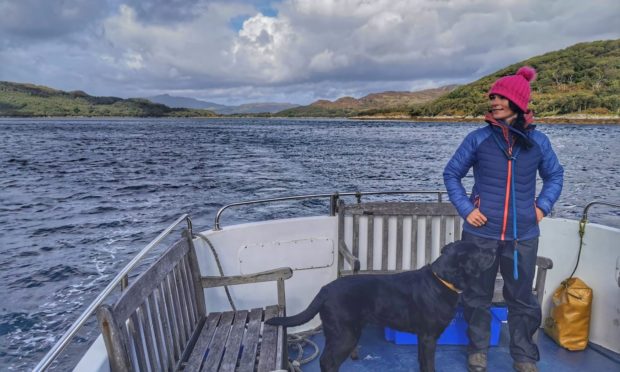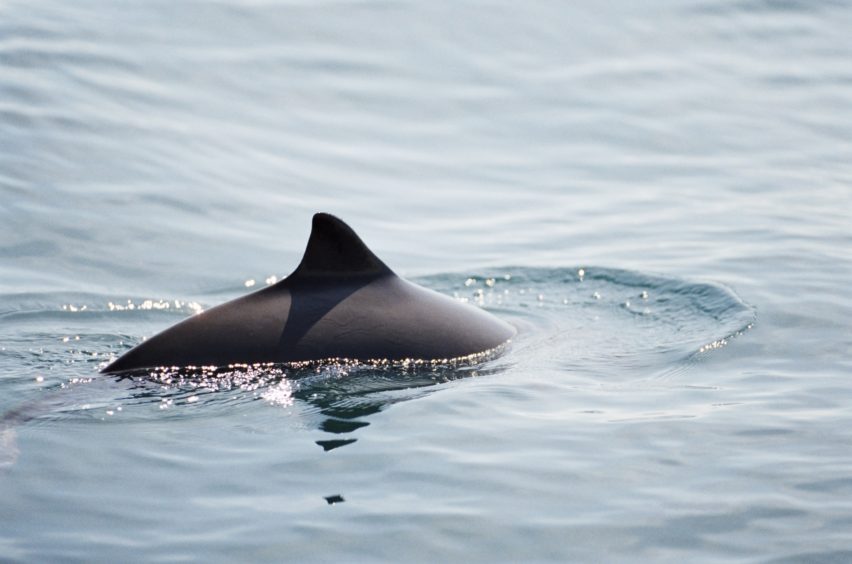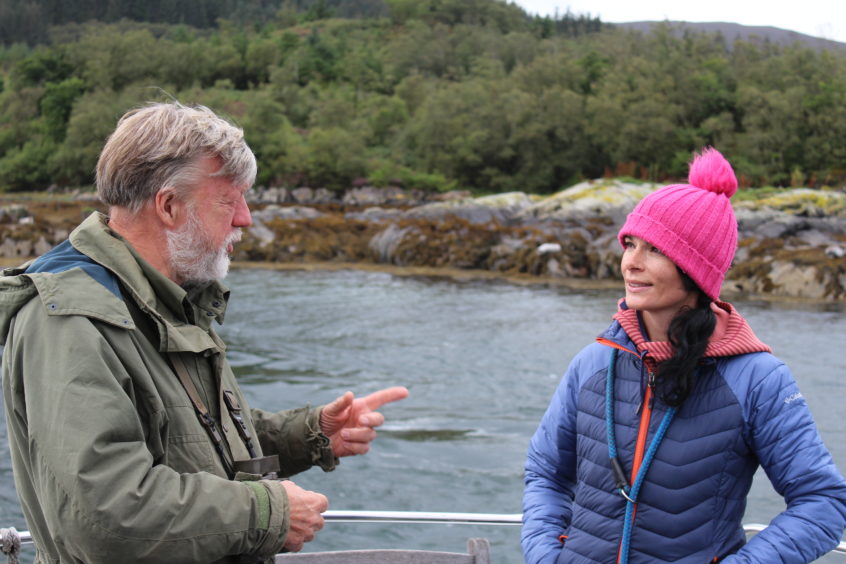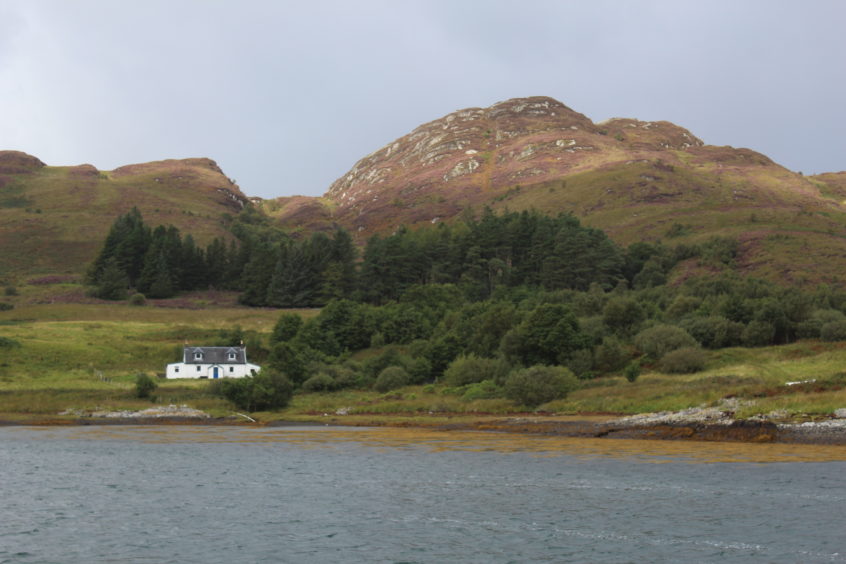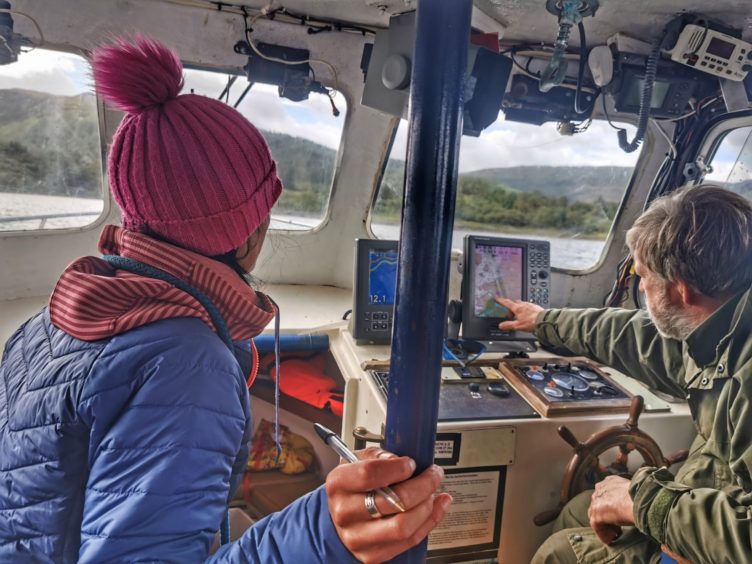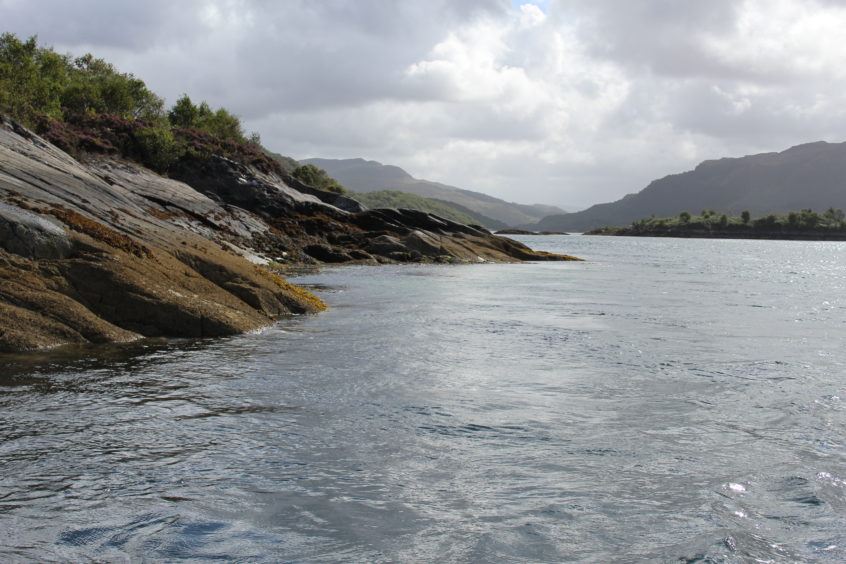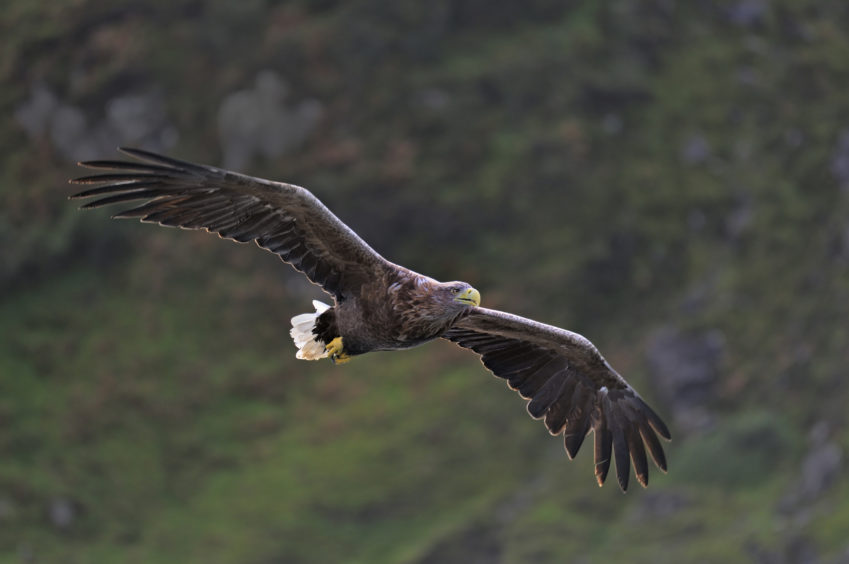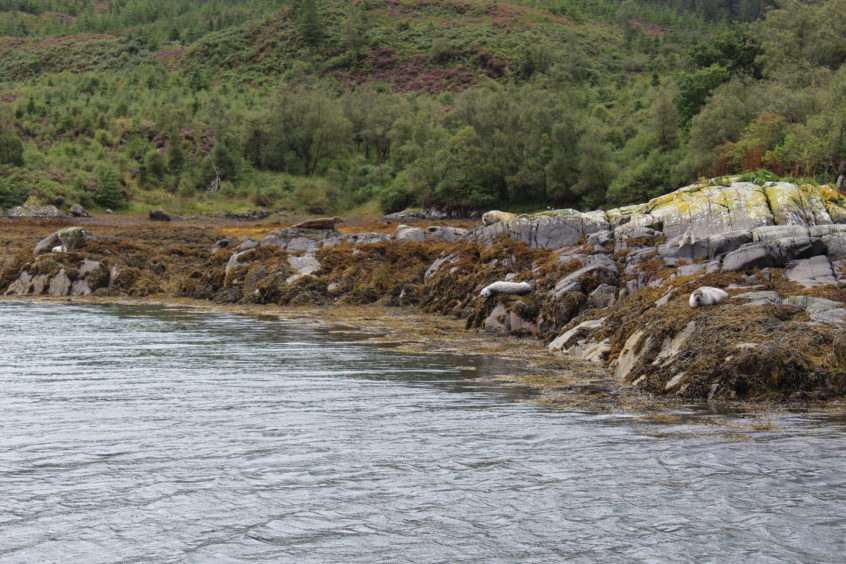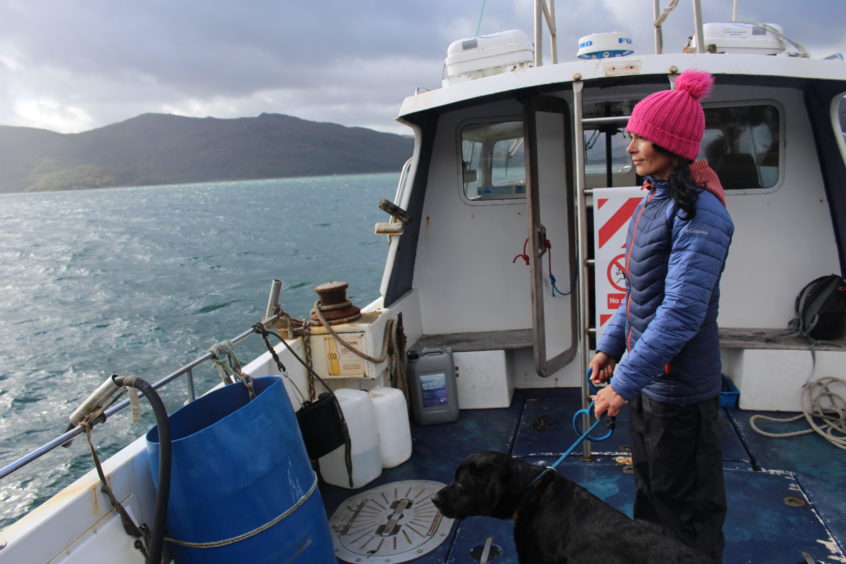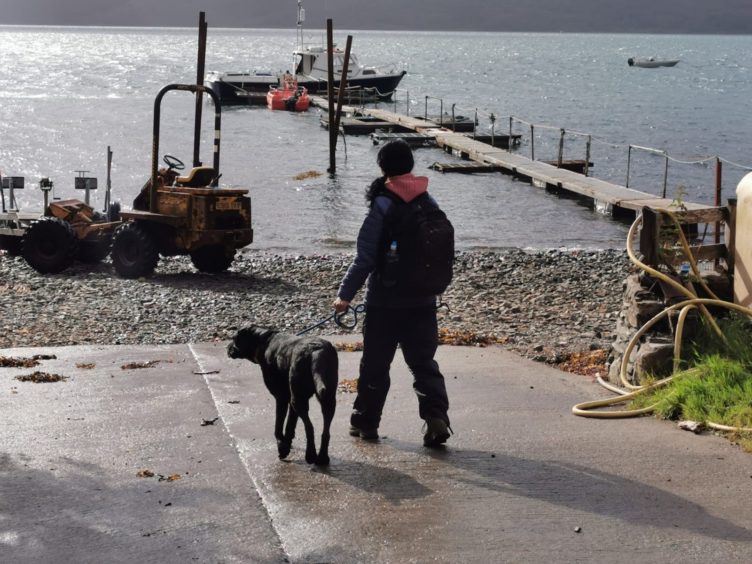Gayle spots wildlife galore on a boat trip around the Isle of Carna on the west coast
Two porpoises, their backs as shiny as black pebbles, arch through the water beside the boat.
Known to be shy and elusive, it’s an honour to catch even just a glimpse of these stunning creatures at such close range.
“It’s a mother and her calf,” exclaims Andy Jackson, skipper for my two-hour cruise around the Isle of Carna.
The trip, which starts from Laga Bay on the north shore of Loch Sunart, is full of surprises – mostly of the wildlife variety – and Andy, who brims with enthusiasm and knowledge, is a brilliant guide.
Within seconds of heading off, what started out as a sunny day turns into a slightly drizzly one, but a rainbow appears over the loch, framing the hills of Ardnumurchan, and giving the scenery a magical, ethereal tinge.
“The weather changes here all the time,” smiles Andy, who among other things, is the coastguard station chief at Salen.
“One minute you’ve got rain, the next sunshine. But when it’s stormy, it’s got character, and it’s always mindblowingly beautiful.”
Originally from Hampshire, Andy, a former aircraft tool maker, moved here in the 1980s and set up Ardnamurchan Charters in 1995.
He and his wife Allison manage Carna, a historic 600-acre island between the Ardnamurchan and Morvern peninsulas.
It was once a busy, thriving place, with 17 households recorded in the 1850s, but these days, there are only three, two of which are off-grid holiday homes.
We briefly dock on the island to take stock of the glorious views and allow Andy to demonstrate that otters – not people – rule the roost.
“Have a sniff,” he invites, scooping up something dark green and slimy from the pontoon and holding it out.
I’m rather wary of this material, and sniffing cautiously, I discover it reeks of fish.
“That’s otter poo for you!” laughs Andy. “It’s not that bad, is it?”
Pointing to a patch of greenery on the island, Andy picks out a small herd of cattle.
“They’re Whitebred Shorthorn-Highland cross heifers, a rare and hardy breed,” he informs me.
“They perform a vital role here, grazing and trampling to restore the grasslands and promote tree growth.”
Getting the cattle to the island on a raft was a challenge. It was a sleety, stormy day in February 2018 but the cows remained calm and as soon as they landed on Carna, their heads went down to munch the grass.
“They have a superb temperament and they’re very friendly, which is great for guests,” says Andy.
Generations of overgrazing by sheep and deer left the island stripped bare and unable to support wildlife or farm animals.
The turning point for its regeneration came in 2014 when the Carna Conservation Community Initiative Company was formed to protect the island’s wildlife and habitats.
“With managed grazing of grassland, meadows and woodland, the soil structure, nutrient content and biodiversity improve, and this results in land with a healthier environment that supports a much richer variety of flora and fauna,” explains Andy.
“The tiniest insects, the eagles soaring overhead, the majestic red deer on the hills, the otters living along the shoreline and the seals and porpoises in our lochs all benefit as a result.”
Passing through the narrows of Caol Carna, which Andy describes as a “paradise” for otters and herons, with fish galore, no people and no traffic, we head into lonely Loch Teacuis.
Pausing to look up at the site of a vitrified fort on a hillside, I notice that apart from the wind and the gentle lapping of waves, there’s complete silence.
Andy admits he often turns off the boat’s engine and simply sits back and embraces this silence and sense of remoteness. I envy him.
While basking in the peace and solitude, I spot a giant bird of prey soaring gracefully on thermals above a rocky outcrop.
It sweeps closer and then, to my absolute joy, I realise it’s a white-tailed eagle!
Described as a “flying barn door”, it’s the UK’s largest and most imposing bird of prey, with a huge wing span of up to 2.5 metres. It’s a truly impressive sight.
Andy, while excited to see it, isn’t surprised.
“This is where they often hang out,” he proclaims, and then, as if by magic, a second, even bigger one appears! Just epic!
Once the birds have flown off, we motor over to the other side of the loch in search of seals.
Lo-and-behold, there are seals in abundance lolling around on rocks and sunbathing, all completely unperturbed by our presence.
Andy reckons there must be a good 80 to 100 – a veritable bonanza!
Making our way back round the west side of Carna, we spot more seals on rocks and various seabirds nesting on cliffs.
There are also the scattered remains of old farmsteads and blackhouses abandoned last century.
We pass tiny Goat Island, so named because it was once populated by goats.
With the creatures long gone, Andy points out how trees and shrubs grow in abundance and it teems with birds.
“There’s a great density of pine, silver birch and rowan,” he says. “They’ve all grown naturally, either with the seeds being wind-blown or birds eating the berries and helping the tree to disperse its seeds.
“It’s amazing how woodlands can regenerate, if left alone and given a chance.”
As we head back to base, we spot impressive Glenborrodale Castle, which sounds and looks like something out of a JRR Tolkien novel.
Built in 1902, the Scots Baronial mansion was on the market in 2017, with offers over £3.75 million.
That gets you the 16-bedroom castle, a coach house, several small private islands and possibly a buried diamond.
To the best of my knowledge, it’s still for sale but alas, my salary doesn’t quite stretch that far.
The area is steeped in history and apparently the vikings settled at Glenborrodale with the area being named after the reputedly seven-foot tall nomadic viking Borrodill.
There’s no shortage of local stories and legends – as well as fascinating facts – with which Andy will gladly regale you.
This, and the fact there’s wildlife here in abundance, ensures a boat trip is a memorable experience.
Info
Andy Jackson and his wife Allison have run Ardnamurchan Charters since 1995.
They offer various trips, including a two-hour wildlife cruise around the Isle of Carna.
They also hire self-drive boats.
For more information and to book, see west-scotland-marine.com or Facebook.
The Isle of Carna was bought by Canon Horace Newton in 1881, whose descendants, the Milward-Towers family, still own it today.
Andy and Allison manage the island on behalf of the family.
For more information about Carna, its self-catering accommodation and conservation projects, see isleofcarna.co.uk
